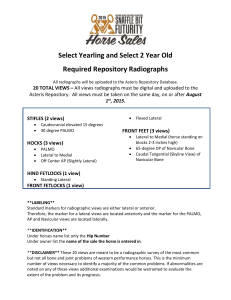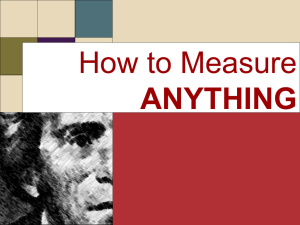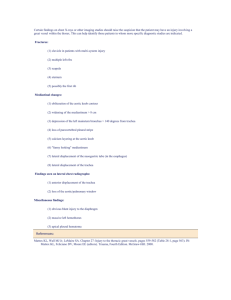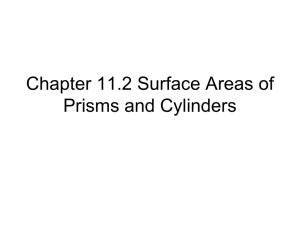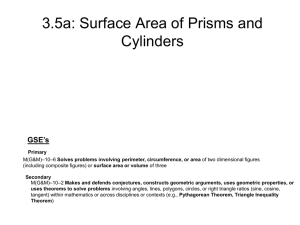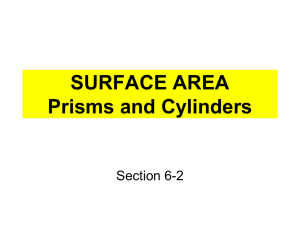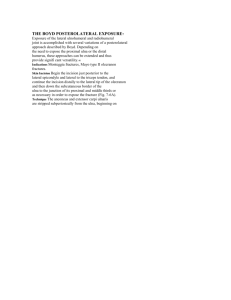Lateral Thinking: Techniques & Quiz
advertisement
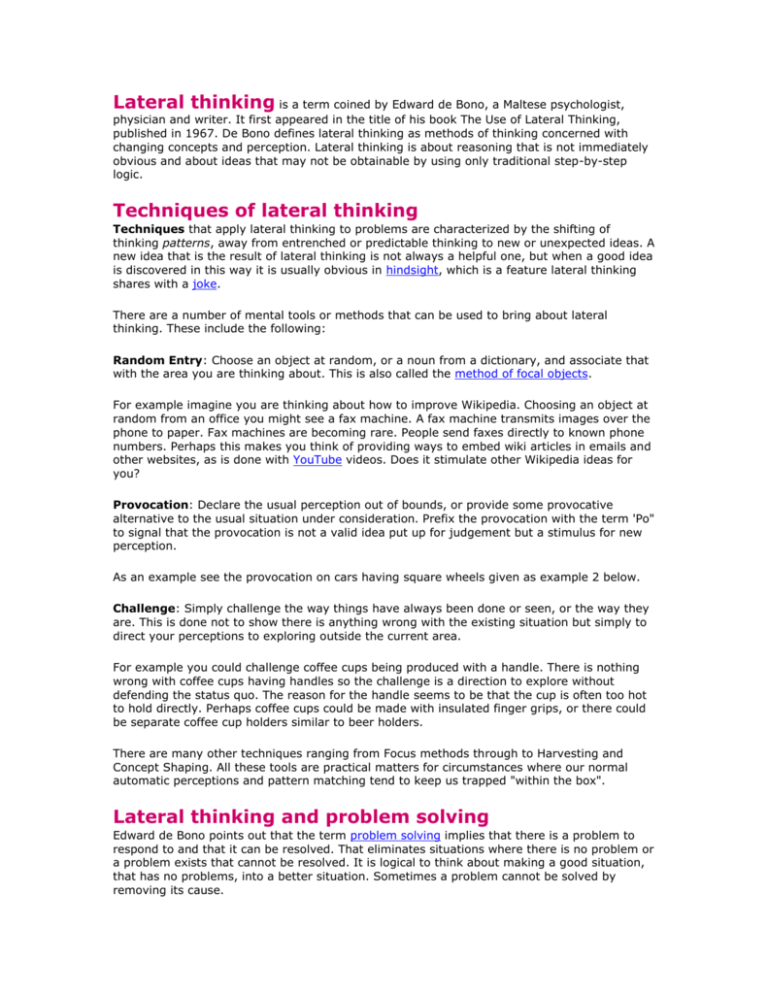
Lateral thinking is a term coined by Edward de Bono, a Maltese psychologist, physician and writer. It first appeared in the title of his book The Use of Lateral Thinking, published in 1967. De Bono defines lateral thinking as methods of thinking concerned with changing concepts and perception. Lateral thinking is about reasoning that is not immediately obvious and about ideas that may not be obtainable by using only traditional step-by-step logic. Techniques of lateral thinking Techniques that apply lateral thinking to problems are characterized by the shifting of thinking patterns, away from entrenched or predictable thinking to new or unexpected ideas. A new idea that is the result of lateral thinking is not always a helpful one, but when a good idea is discovered in this way it is usually obvious in hindsight, which is a feature lateral thinking shares with a joke. There are a number of mental tools or methods that can be used to bring about lateral thinking. These include the following: Random Entry: Choose an object at random, or a noun from a dictionary, and associate that with the area you are thinking about. This is also called the method of focal objects. For example imagine you are thinking about how to improve Wikipedia. Choosing an object at random from an office you might see a fax machine. A fax machine transmits images over the phone to paper. Fax machines are becoming rare. People send faxes directly to known phone numbers. Perhaps this makes you think of providing ways to embed wiki articles in emails and other websites, as is done with YouTube videos. Does it stimulate other Wikipedia ideas for you? Provocation: Declare the usual perception out of bounds, or provide some provocative alternative to the usual situation under consideration. Prefix the provocation with the term 'Po" to signal that the provocation is not a valid idea put up for judgement but a stimulus for new perception. As an example see the provocation on cars having square wheels given as example 2 below. Challenge: Simply challenge the way things have always been done or seen, or the way they are. This is done not to show there is anything wrong with the existing situation but simply to direct your perceptions to exploring outside the current area. For example you could challenge coffee cups being produced with a handle. There is nothing wrong with coffee cups having handles so the challenge is a direction to explore without defending the status quo. The reason for the handle seems to be that the cup is often too hot to hold directly. Perhaps coffee cups could be made with insulated finger grips, or there could be separate coffee cup holders similar to beer holders. There are many other techniques ranging from Focus methods through to Harvesting and Concept Shaping. All these tools are practical matters for circumstances where our normal automatic perceptions and pattern matching tend to keep us trapped "within the box". Lateral thinking and problem solving Edward de Bono points out that the term problem solving implies that there is a problem to respond to and that it can be resolved. That eliminates situations where there is no problem or a problem exists that cannot be resolved. It is logical to think about making a good situation, that has no problems, into a better situation. Sometimes a problem cannot be solved by removing its cause. We may need to solve some problems not by removing the cause but by designing the way forward even if the cause remains in place. – (Edward de Bono)Lateral thinking can be used to help in solving problems but can also be used for much more. Lateral Thinking Quiz The following questions will test your ability to think laterally. If you get more than 50% of this right you're certainly strong on your lateral thinking skills 1. A graduate applying for pilot training with a major airline was asked what he would do if, after a long-haul flight to Sidney, he met the captain wearing a dress in the hotel bar. What would you do? 2. What can you hold in your right hand, but not in your left? 3. If you have two coins totaling 11p, and one of the coins is not a penny, what are the two coins? 4. How many animals of each species did Moses take into the Ark? 5. A man built a rectangular house, each side having a southern view. He spotted a bear. What color was the bear? 6. If you were alone in a deserted house at night, and there was an oil lamp, a candle and firewood and you only have one match, which would you light first? 7. Which side of a cat contains the most hair? 8. The 60th and 62nd British Prime Ministers of the UK had the same mother and father, but were not brothers. How do you account for this? 9. How many birthdays does a typical woman have? 10. Why can't a man living in Canterbury be buried west of the River Stour? 11. Divide 40 by half and add ten. What is the answer? 12. To the nearest cubic centimeter, how much soil is there in a 3m x 2m x 2m hole? 13. Is it legal more a man to marry his widow's sister? 14. If you drove a coach leaving Canterbury with 35 passengers, dropped off 6 and picked up 2 at Faversham, picked up 9 more at Sittingbourne, dropped off 3 at Chatham, and then drove on to arrive in London 40 minutes later, what would the name of the driver be? 15. A farmer has 15 cows, all but 8 die. How many does he have left? 16. A woman lives on the tenth floor of a block of flats. Every morning she takes the lift down to the ground floor and goes to work. In the evening, she gets into the lift, and, if there is someone else in the lift she goes back to her floor directly. Otherwise, she goes to the eighth floor and walks up two flights of stairs to her flat. How do you explain this? 17. The band of stars across the night sky is called the "...... Way" 18. Yogurt is made from fermented ........ 19. What do cows drink? 20. If a red house is made of red bricks, and a blue house is made of blue bricks, what is a green house made of? 21. If a plane crashes on the Italian/Swiss border, where do you bury the survivors? 22. If the hour hand of a clock moves 1/60th of a degree every minute, how many degrees will it move in an hour? 23. John's mother has 3 children, one is named April, one is named May. What is the third one named? 24. A cowboy rode into town on Friday, spent one night there, and left on Friday. How do you account for this? 25. How man degrees are there between clock hands at 3.15 pm? (Answers on the next page) Answers: 1. The captain was of course a woman. Many airlines are now hot on equal opportunities and a candidate who has difficulty envisaging that an airline captain might be female will not go very far! 2. Your left hand, forearm or elbow. 3. 10p and 1p - the other coin can be a penny! 4. None. NOAH built the Ark 5. White. Only at the North Pole can all four walls be facing South. 6. The match! 7. The outside 8. Churchill was Prime Minister twice, from 1940 to 45 and from 1951 to 55. 9. One 10. Because he is still alive . 11. 90. Dividing by half is the same as multiplying by 2. 12. None - it's a hole! 13. No - because he's dead 14. YOU are the driver! 15. 8 16. The woman is of small stature and couldn't reach the upper lift buttons. 17. Milky Way 18. Milk 19. Water. After the previous two questions, did you answer milk? 20. Glass 21. You don't bury survivors! 22. One 23. John 24. His horse was named Friday 25. Not zero degrees as you might at first think. The minute hand will be at 15 minutes (90 degrees clockwise from vertical) but the hour hand will have progressed to one quarter of the distance between 3 pm and 4 pm. Each hour represents 30 degrees (360 / 12), so one quarter of an hour equals 7.5 degrees, so the minute hand will be at 97.5 degrees: a 7.5 degree difference between the hands.


